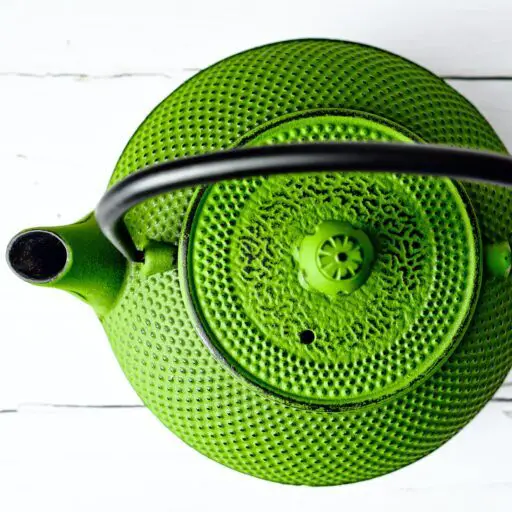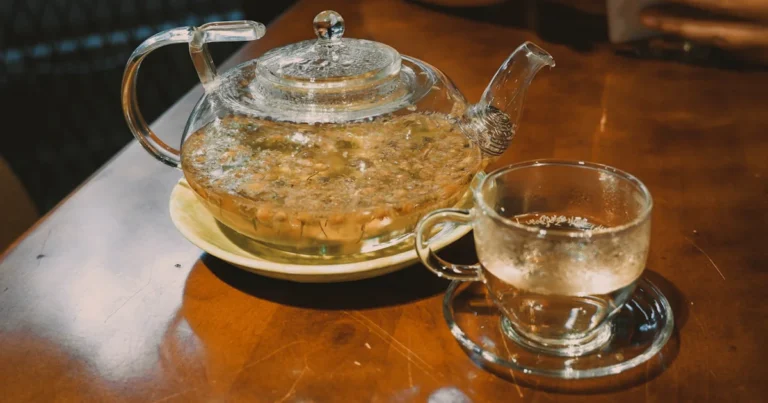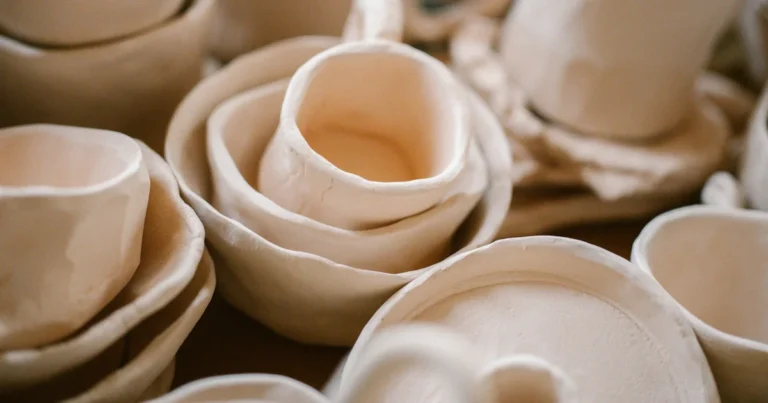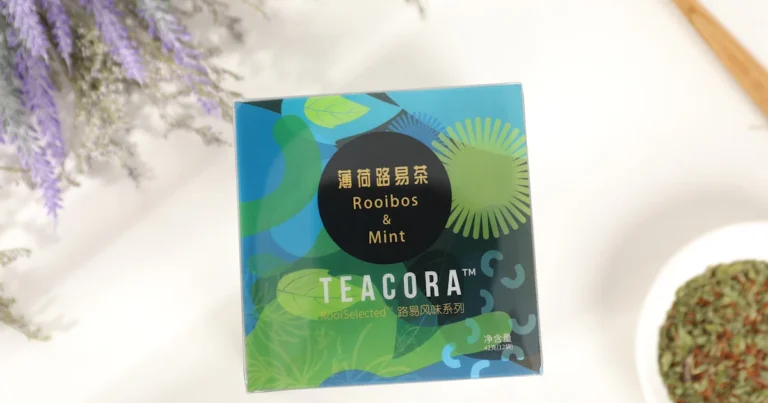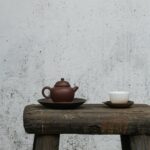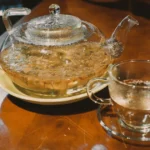Support our educational content for free when you purchase through links on our site. Learn more
Which Is the Best Tea to Buy? ☕️ Top 15 Picks for 2025
Ever found yourself lost in the tea aisle, overwhelmed by endless options and wondering, “Which is the best tea to buy?” You’re not alone! At Tea Brands™, we’ve tasted our way through countless blends—from regal black teas to funky oolongs and zesty herbal infusions—to bring you the ultimate guide for 2025. Did you know that tea is the world’s second-most consumed beverage after water? Yet, not all teas are created equal. Whether you crave a classic Earl Grey or a rare honey-sweetened oolong, we’ve got expert reviews, brewing tips, and insider secrets to help you find your perfect cup.
Stick around as we reveal our top 15 teas, including the regal Fortnum & Mason Royal Blend, the vibrant Murchie’s Earl Grey, and the uniquely sweet Third Culture Bakery Honey Bug Bite Oolong. Plus, learn how to brew like a pro and where to buy these gems. Ready to elevate your tea game? Let’s dive in!
Key Takeaways
- The best tea depends on your taste and brewing style, but our top 15 picks cover every palate—from bold black teas to delicate whites and caffeine-free herbals.
- Fortnum & Mason Royal Blend stands out as the quintessential black tea, perfect for those seeking a smooth, malty cup.
- Loose-leaf teas generally offer superior flavor compared to tea bags, thanks to whole leaves and better processing.
- Brewing temperature and steeping time are crucial to unlocking the full flavor of each tea type.
- Herbal teas provide caffeine-free options with unique health benefits and vibrant flavors.
- For convenience and quality, buy from trusted retailers like Fortnum & Mason, Murchie’s, Third Culture Bakery, and Onyx Coffee Lab.
👉 Shop Our Top Tea Picks:
- Fortnum & Mason Royal Blend on Amazon | Official Site
- Murchie’s Earl Grey
- Third Culture Bakery Honey Bug Bite Oolong
- Onyx Coffee Lab Tealight
Ready to find your next favorite tea? Keep reading for detailed reviews, expert tips, and brewing secrets!
Table of Contents
- ⚡️ Quick Tips and Facts About Choosing the Best Tea
- 🌱 The Rich History and Origins of Tea: From Leaf to Cup
- 🍃 Understanding Tea Types: Black, Green, Oolong, White, and Herbal Explained
- 🔍 How to Identify High-Quality Tea Leaves: Expert Tips and Tricks
- ☕️ Top 15 Best Teas to Buy in 2024: Our Expert Reviews and Recommendations
- 1. The Ultimate Black Tea Experience: Fortnum & Mason Royal Blend
- 2. Classic Elegance in a Cup: Murchie’s Earl Grey with Vibrant Citrus Notes
- 3. Sweet and Mellow Oolong: Third Culture Bakery Honey Bug Bite
- 4. Funky and Bold: Onyx Tealight Black Tea Blend
- 5. Southern Charm Iced Tea: Luzianne Classic Black Iced Tea
- 6. Fragrant Jasmine Delight: Yamamotoyama Jasmine Tea
- 7. Refreshing Green Tea: Masha Green’s Grassy and Floral Notes
- 8. Premium Matcha Magic: Ippodo Horai and Kettl Uji Genmaimatcha
- 9. Minty and Herbaceous Boost: Onyx Peppermint Yerba Mate
- 10. Floral and Delicate: Masha Love and Bellocq No. 96 White Wedding
- 11. Buzz-Free Chai Alternative: Big Heart Tea Co. Chai
- 12. Zesty Herbal Refreshers: Teapigs Lemon & Ginger and Tazo Passion
- 💡 Brewing the Perfect Cup: Water Temperature, Steeping Times, and Tools
- 🛒 Where to Buy the Best Tea: Trusted Retailers and Online Shops
- 💬 How to Taste Tea Like a Pro: Flavor Notes and Aroma Profiles
- 🌿 Health Benefits and Nutritional Insights of Different Teas
- 🧳 Tea Gifting Guide: Best Teas to Impress Every Palate
- 📦 Storage Secrets: How to Keep Your Tea Fresh and Flavorful
- ❓ Frequently Asked Questions About Buying the Best Tea
- 🎯 Conclusion: Our Final Verdict on the Best Tea to Buy Today
- 🔗 Recommended Links for Tea Lovers
- 📚 Reference Links and Further Reading
Here at Tea Brands™, we’ve sipped, slurped, and steeped our way through mountains of tea leaves. We’ve had transcendent tea moments and, let’s be honest, some that tasted like boiled potpourri. So, when you ask, “Which is the best tea to buy?”—we don’t just have an answer; we have a story, a guide, and a whole lot of opinions.
Pour yourself a cuppa, get comfortable, and let’s spill the tea on finding your perfect brew. What makes a tea truly “the best”? Is it the history, the flavor, the brand, or something else entirely? We think it’s all of the above, and by the end of this, you will too.
⚡️ Quick Tips and Facts About Choosing the Best Tea
In a hurry? Here’s the tea, brewed strong and fast. These are the essential tidbits you need to know before you buy. And if you’ve ever wondered, Can I Grow My Own Tea at Home? 7 Easiest Types to Try! 🪴 (2025), we’ve got you covered on that, too!
- Know Your Types: All “true” teas (black, green, oolong, white) come from the same plant: Camellia sinensis. The difference is all in the processing, specifically oxidation.
- Loose Leaf vs. Tea Bags: Generally, loose-leaf tea offers superior flavor because the leaves are larger and have more room to expand and release their oils. Tea bags offer convenience, but often contain “fannings” or “dust”—smaller, broken pieces.
- Water Temperature is CRUCIAL: Boiling water is great for black and herbal teas, but it will scorch delicate green and white teas, making them bitter. 😱
- Storage Matters: Your tea’s worst enemies are air, heat, light, and moisture. Store it in an airtight, opaque container in a cool, dark place. Please, not in a glass jar on the sunny windowsill!
- “Best By” vs. “Expiration”: Tea doesn’t really “expire” like milk, but it does lose its flavor and aroma over time. For the best taste, use it within a year of purchase.
| Quick Tea Fact Sheet | Details |
|---|---|
| Origin of “True” Tea | All from the Camellia sinensis plant. |
| Herbal “Teas” (Tisanes) | Made from other plants like mint, chamomile, hibiscus. Technically not “tea.” |
| Caffeine Content | Black tea typically has the most, followed by oolong, green, and white. |
| Key to Flavor | Oxidation level, leaf quality, and brewing technique. |
| Biggest Brewing Mistake | Using water that’s too hot for green or white tea. |
🌱 The Rich History and Origins of Tea: From Leaf to Cup
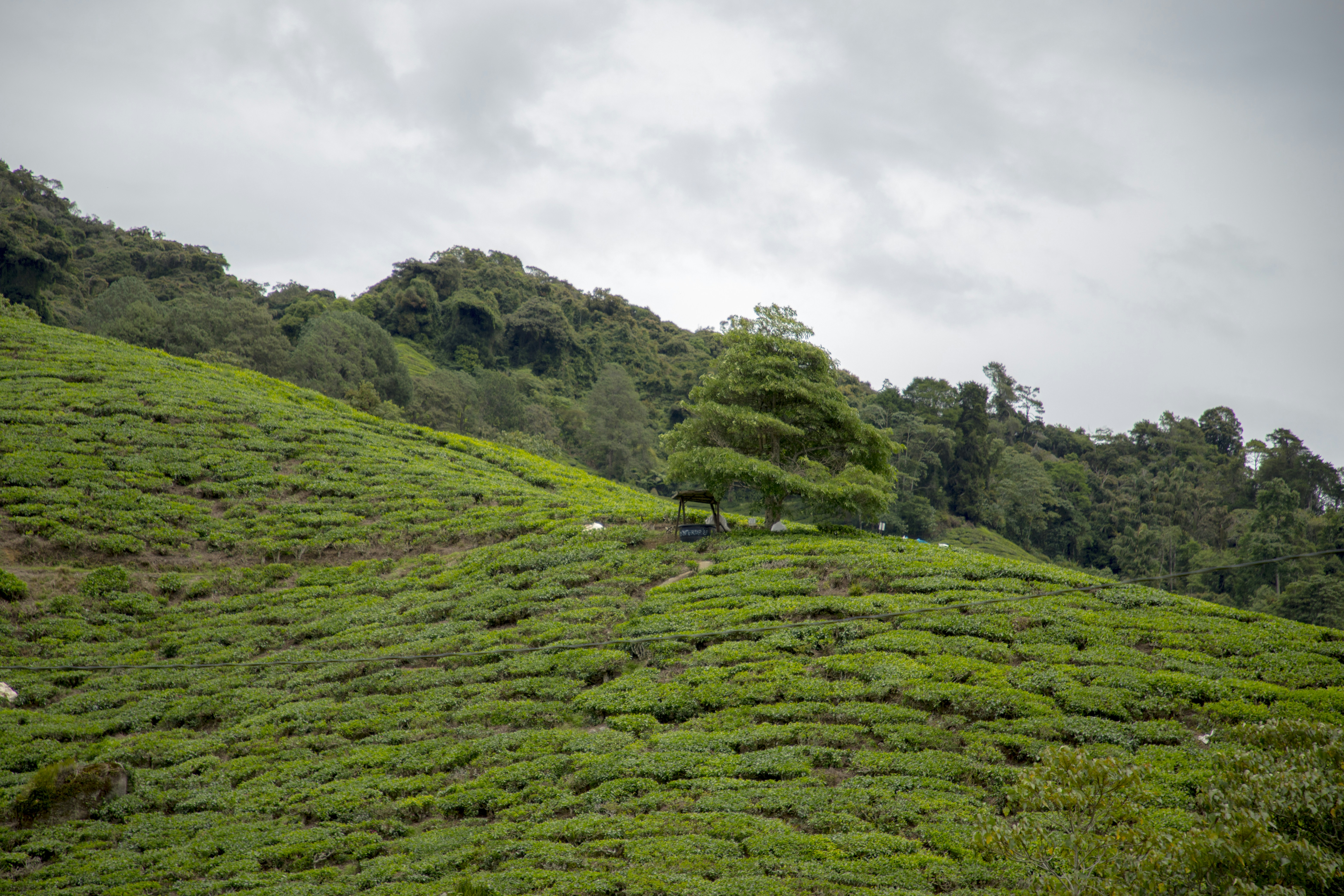
Every cup of tea is a cup of history. The story, as legend has it, begins in 2737 BCE with the Chinese emperor Shen Nung. While boiling water under a tree, a few leaves from a wild tea plant drifted into his pot. He drank the accidental infusion and, voilà, tea was born!
While that’s a lovely tale, historical records confirm that tea consumption was widespread in China by the Han Dynasty (206 BCE – 220 CE). It was initially used as a medicinal beverage before evolving into the daily ritual we know and love. From the intricate Japanese tea ceremonies to the British obsession that led to the Boston Tea Party, tea has shaped cultures, economies, and even empires. As documented by the World History Encyclopedia, tea’s journey from a regional Chinese remedy to the world’s second-most-consumed beverage (after water!) is a fascinating saga of trade, tradition, and taste.
When you sip a malty Assam, you’re tasting the legacy of British cultivation in India. When you enjoy a toasty Japanese Genmaicha, you’re part of a tradition that’s been refined for centuries. So next time you brew a cup, take a moment to appreciate the incredible journey those leaves have taken.
🍃 Understanding Tea Types: Black, Green, Oolong, White, and Herbal Explained
Walking down the tea aisle can feel overwhelming. What’s the real difference between English Breakfast and Earl Grey? Or Sencha and Matcha? It all comes down to one little thing: oxidation. This is the chemical reaction that occurs when the enzymes in the tea leaves are exposed to oxygen, causing them to turn brown and develop deeper, maltier flavors.
Here’s a simple breakdown:
| Tea Type | Oxidation Level | Common Flavor Profile | Caffeine (Approx.) |
|---|---|---|---|
| Black Tea | 100% (Fully Oxidized) | Malty, robust, fruity, bold | 40-70 mg |
| Oolong Tea | 10-80% (Partially Oxidized) | Floral, creamy, toasty, fruity | 30-60 mg |
| Green Tea | 0% (Unoxidized) | Grassy, vegetal, nutty, sweet | 20-45 mg |
| White Tea | ~5% (Minimally Oxidized) | Delicate, floral, sweet, subtle | 6-25 mg |
| Herbal Tisane | N/A (Not from Camellia sinensis) | Varies wildly: minty, spicy, fruity, earthy | 0 mg (usually) |
The “True Teas” from Camellia Sinensis
- Black Tea: The leaves are rolled and allowed to fully oxidize, creating deep, dark colors and robust flavors. Think of a classic English Breakfast or a spicy Chai.
- Green Tea: To prevent oxidation, the leaves are quickly heated (either steamed, as in Japan, or pan-fired, as in China). This preserves their green color and fresh, vegetal taste. Sencha and Dragon Well are classic examples.
- Oolong Tea: The chameleon of the tea world! Oolongs can be lightly oxidized (closer to a green tea) or heavily oxidized (closer to a black tea), offering an incredible spectrum of flavors.
- White Tea: Made from the youngest, most tender buds and leaves of the tea plant. They are simply withered and dried, resulting in a very delicate, naturally sweet flavor.
The Wonderful World of Herbal “Teas”
Anything that isn’t from the Camellia sinensis plant is technically a “tisane,” but we all call it Herbal Tea. These are your Peppermints, Chamomiles, Rooibos, and Gingers. They are naturally caffeine-free and offer a universe of flavors all their own.
🔍 How to Identify High-Quality Tea Leaves: Expert Tips and Tricks
Ever opened a box of tea bags and seen nothing but sad, brown dust? That’s the difference between high-quality and, well, not-so-high-quality tea. Here at Tea Brands™, we look for a few key signs of a superior leaf.
- Look at the Leaves (The “Leaf Grade”):
- ✅ Whole Leaves: The best teas are made from whole, unbroken leaves. For loose-leaf tea, you should be able to see the shape of the leaf. This is a sign of careful harvesting and processing.
- ❌ Dust and Fannings: These are the tiny, broken bits left over from processing. They release tannins quickly, often resulting in a bitter, one-dimensional brew. This is what you’ll typically find in standard paper tea bags.
- Use Your Nose (The “Aroma”):
- ✅ Vibrant and Distinct: High-quality tea should have a strong, pleasant aroma that is characteristic of its type. A good Darjeeling should smell floral and muscatel-like; a fresh green tea should smell grassy or nutty.
- ❌ Dull or Stale: If the tea smells like dust, cardboard, or nothing at all, it’s likely old or of poor quality.
- Check the Color (The “Appearance”):
- ✅ Bright and Consistent: The color of the dry leaves should be vibrant. For example, good green tea should be, well, green—not a sad, brownish-yellow. Black tea leaves should be dark and rich in color.
- ❌ Uneven and Faded: A mix of faded, dull colors can indicate old tea or a blend of different quality leaves.
The ultimate test, of course, is in the tasting. A high-quality tea will have complexity and a lingering finish (the “aftertaste”). It should take you on a journey of flavor, not just hit you with a single, flat note.
☕️ Top 15 Best Teas to Buy in 2024: Our Expert Reviews and Recommendations
Alright, this is it. The moment you’ve been waiting for. After countless tasting sessions (it’s a tough job, but someone has to do it), we’ve narrowed it down. Here are our top picks for the best teas you can buy right now, from timeless classics to exciting new blends. For more deep dives, check out our Tea Brand Spotlights.
1. The Ultimate Black Tea Experience: Fortnum & Mason Royal Blend
| Rating Aspect | Score (1-10) | Notes |
|---|---|---|
| Flavor Profile | 9.5/10 | Smooth, malty, honeyed, with a crisp finish. The quintessential black tea. |
| Aroma | 9/10 | Rich, inviting, slightly floral. |
| Quality | 10/10 | Fit for royalty, literally. Impeccable leaf quality. |
| Versatility | 9/10 | Fantastic on its own, but also holds up beautifully to milk and sugar. |
If you want to feel like you’re taking tea at Buckingham Palace, this is your brew. Created in 1902 for King Edward VII, this blend of Flowery Pekoe from Sri Lanka and malty Assam is the definition of a refined, classic black tea.
It brews into a stunning golden-amber liquor. The flavor is incredibly smooth—none of the harsh bitterness you get from lesser black teas. As the tasters at Wirecutter put it, “It shines where most ordinary black teas in tea bags fall flat.” We couldn’t agree more. It has a malty depth from the Assam, but a bright, almost honey-like sweetness that makes it so, so drinkable. It’s the kind of tea that makes you sit up a little straighter and feel a little more civilized.
👉 Shop Fortnum & Mason Royal Blend on:
2. Classic Elegance in a Cup: Murchie’s Earl Grey with Vibrant Citrus Notes
| Rating Aspect | Score (1-10) | Notes |
|---|---|---|
| Flavor Profile | 9/10 | Bright bergamot, smooth black tea base, hints of vanilla and pepper. |
| Aroma | 10/10 | The perfect, invigorating citrus-floral scent. This is what Earl Grey should smell like. |
| Quality | 9/10 | A well-balanced blend from a heritage brand. |
| Best For | 10/10 | The Earl Grey purist who wants a clean, classic, and perfectly balanced cup. |
Some Earl Greys taste like they were just vaguely acquainted with a bergamot orange. Others taste like you’re drinking perfume. Murchie’s Earl Grey gets it just right. This Canadian brand has been around since 1894, and they’ve perfected the art of this beloved blend.
The bergamot here is potent but not overpowering. It’s bright, zesty, and authentic. Underneath, the black tea base is smooth and satisfying. Wirecutter’s tasters praised its “bright citrus and smooth vanilla and a touch of pepperiness,” calling it “everything Earl Grey should be.” We love it for its clean finish. It’s the perfect afternoon pick-me-up, especially when you’re dreaming of a London Fog latte.
👉 Shop Murchie’s Earl Grey on:
3. Sweet and Mellow Oolong: Third Culture Bakery Honey Bug Bite
| Rating Aspect | Score (1-10) | Notes |
|---|---|---|
| Flavor Profile | 10/10 | Unbelievably rich. Honey, caramel, malt, with a deep oolong base. |
| Aroma | 9.5/10 | Sweet, toasty, and complex. |
| Uniqueness | 10/10 | The “bug-bitten” process creates a flavor you won’t find anywhere else. |
| Best For | 9/10 | Adventurous palates and anyone who loves a naturally sweet tea. |
Get ready for a story. This tea gets its incredible flavor from a tiny insect, the tea jassid. When these little guys nibble on the tea leaves, the plant produces a defensive secretion that, miraculously, tastes like honey. The result is one of the most unique and delicious oolongs we’ve ever tasted.
Third Culture Bakery’s Honey Bug Bite Oolong is a revelation. It’s deeply sweet without any added sugar, with notes of brown sugar, malt, and ripe fruit. One Wirecutter tester raved, “It leaves no tastebud or olfactory bulb untouched, but not in an aggressive way.” It has the complexity of a fine wine and a rich, amber color that seems to glow. This is a special occasion tea, a true treat from the world of Specialty Blends.
👉 Shop Third Culture Bakery on:
4. Funky and Bold: Onyx Tealight Black Tea Blend
| Rating Aspect | Score (1-10) | Notes |
|---|---|---|
| Flavor Profile | 9/10 | Complex and surprising. Malt, cinnamon, honey, with hints of fruit and oak. |
| Aroma | 9/10 | Warm, spicy, and comforting. |
| Creativity | 10/10 | A truly unique blend using rolled oats for a cozy finish. |
| Best For | 9/10 | The coffee drinker looking to get into tea; it’s complex and satisfying. |
From the coffee masters at Onyx Coffee Lab comes a tea that is just as complex and thoughtfully crafted as their award-winning beans. Onyx Tealight is not your average black tea. It’s a blend of Chinese black tea, cinnamon, and—get this—rolled oats.
The result is a cup that is cozy, warm, and endlessly fascinating. Our tasters found notes of malt, honey, and warming spice, while some even detected hints of lychee and whiskey. The rolled oats add a subtle creaminess and body that is just divine. It’s a “funky” blend in the best possible way—surprising, delicious, and utterly memorable.
👉 Shop Onyx Tealight on:
5. Southern Charm Iced Tea: Luzianne Classic Black Iced Tea
| Rating Aspect | Score (1-10) | Notes |
|---|---|---|
| Flavor Profile | 8.5/10 | Smooth, toasty, well-balanced, never bitter. The perfect iced tea base. |
| Convenience | 10/10 | Specially designed family-size bags for easy pitcher brewing. |
| Value | 9/10 | Excellent quality for a widely available and affordable brand. |
| Best For | 10/10 | A perfect pitcher of classic Southern-style iced tea, sweet or unsweet. |
For a perfect pitcher of iced tea on a hot day, you can’t beat a classic. Luzianne has been the gold standard for Southern iced tea for over a century, and for good reason. They use a blend of orange pekoe and pekoe cut black teas that are specially chosen to be clear and never cloudy when chilled.
The flavor is smooth, refreshing, and has a pleasant toasty quality that sets it apart. It’s “eminently drinkable,” as Wirecutter notes, and stands up perfectly to a heap of sugar for a true sweet tea, or is just as delicious served unsweet with a slice of lemon. It’s a no-fuss, consistently delicious choice for beating the heat.
👉 Shop Luzianne Iced Tea on:
6. Fragrant Jasmine Delight: Yamamotoyama Jasmine Tea
| Rating Aspect | Score (1-10) | Notes |
|---|---|---|
| Flavor Profile | 9/10 | Full-bodied green tea with authentic, sweet jasmine and a hint of honeysuckle. |
| Aroma | 9.5/10 | A beautiful, natural floral scent that isn’t perfumey. |
| Quality | 8.5/10 | Excellent flavor and potency from a convenient tea bag. |
| Best For | 9/10 | A flavorful, aromatic, and caffeinated floral tea to power through the day. |
Jasmine tea is made by scenting green tea leaves with fresh jasmine blossoms, a process that can be done well or… not so well. Yamamotoyama Jasmine Tea does it beautifully. This isn’t a weak, vaguely floral tea; it’s a full-bodied and fragrant experience.
The jasmine flavor and scent come through clearly and authentically, with a lovely honeysuckle sweetness and a bright finish. It’s strong enough to give you a good caffeine kick but smooth enough to drink all day. It’s one of the best examples we’ve found of a bagged tea that delivers the flavor and potency you’d expect from loose-leaf.
👉 Shop Yamamotoyama Jasmine Tea on:
7. Refreshing Green Tea: Masha Green’s Grassy and Floral Notes
| Rating Aspect | Score (1-10) | Notes |
|---|---|---|
| Flavor Profile | 9/10 | Fresh, grassy, with notes of melon and citrus. Lightly tannic. |
| Aroma | 8.5/10 | Clean and vegetal. |
| Quality | 9/10 | Organic, high-quality leaves that brew a lovely green hue. |
| Best For | 9/10 | Someone looking for a bright, refreshing, and non-bitter green tea. |
If you think all green tea tastes like bitter grass, you haven’t tried the right one yet. Masha Green is here to change your mind. This organic green tea is wonderfully approachable and complex.
It tastes fresh and vibrant, with a pleasant grassy base complemented by surprising notes of fresh melon and a hint of citrus. It has a light tannic structure that gives it body without being overly astringent or mild. It’s a beautifully balanced cup that showcases how delightful a simple, high-quality green tea can be.
👉 Shop Masha Tea on:
8. Premium Matcha Magic: Ippodo Horai and Kettl Uji Genmaimatcha
Matcha is a different beast entirely—a powdered green tea that you whisk into water, consuming the entire leaf. It’s known for its vibrant green color, umami flavor, and potent dose of caffeine and L-theanine. Here are two of our absolute favorites.
A Stunning Green Tea: Ippodo Horai Matcha
| Rating Aspect | Score (1-10) | Notes |
|---|---|---|
| Flavor Profile | 9.5/10 | Rich, smooth, buttery, with deep umami and very little bitterness. |
| Color | 10/10 | A brilliant, almost glowing, deep green. |
| Quality | 9/10 | An excellent “gateway matcha” that is both high-grade and approachable. |
| Best For | 10/10 | The perfect introduction to the world of high-quality matcha. |
Known in tea circles as a “gateway matcha,” Ippodo’s Horai no Mukashi is the perfect place to start your journey. It whisks into a beautiful foam and has a color that “almost glows green,” according to Wirecutter. The taste is incredibly smooth, rich, and buttery with a satisfying umami depth and almost no bitterness. It’s a truly luxurious experience.
Malty and Verdant: Kettl Uji Genmaimatcha
| Rating Aspect | Score (1-10) | Notes |
|---|---|---|
| Flavor Profile | 9/10 | Umami-rich, fresh, with a background nuttiness from roasted rice. |
| Aroma | 9.5/10 | Toasty, nutty, and green. Like a warm bowl of popcorn and a fresh lawn. |
| Uniqueness | 10/10 | The combination of sencha, matcha, and toasted rice is a flavor explosion. |
| Best For | 9/10 | Those who love the toasty flavor of genmaicha but want the richness of matcha. |
What happens when you combine sencha (a classic green tea), matcha (powdered green tea), and toasted brown rice? You get Kettl Uji Genmaimatcha, a tea that is the best of all worlds. It’s remarkably fresh and umami-rich from the green teas, with a wonderful background nuttiness and toasty flavor from the roasted rice. It’s a lush, complex, and deeply satisfying cup.
👉 Shop Premium Matcha on:
- Ippodo Horai: Ippodo Official Website
- Kettl Uji Genmaimatcha: Kettl Official Website
9. Minty and Herbaceous Boost: Onyx Peppermint Yerba Mate
| Rating Aspect | Score (1-10) | Notes |
|---|---|---|
| Flavor Profile | 9/10 | Bright, tingly peppermint balanced by the earthy, green notes of mate. |
| Energy Boost | 9/10 | Caffeinated and invigorating, a great coffee alternative. |
| Quality | 8.5/10 | High-quality ingredients create a bold, crisp flavor. |
| Best For | 9/10 | A refreshing, caffeinated take on a classic mint tea. |
Another hit from Onyx, this blend takes the classic mint tea and gives it a caffeinated, herbaceous kick. Onyx Peppermint Yerba Mate balances the bright, cooling notes of peppermint with the lush, earthy greenness of yerba mate. The mint hits you first, but it gives way to woody, herbaceous bottom notes that make for a truly interesting sip. It’s a bold, crisp, and energizing brew.
👉 Shop Onyx Peppermint Yerba Mate on:
10. Floral and Delicate: Masha Love and Bellocq No. 96 White Wedding
For moments that call for something subtle, floral, and utterly beautiful, these two blends are our top choices. They are perfect examples of how to find the best tea to buy when you want something truly special.
Mild and Floral: Masha Love
| Rating Aspect | Score (1-10) | Notes |
|---|---|---|
| Flavor Profile | 9/10 | Exceptionally subtle. Herbal cedar and hyssop, with hints of honey and rose. |
| Aroma | 8.5/10 | Gentle and comforting. |
| Best For | 9/10 | Winding down in the evening or when you need a gentle, comforting cup. |
Masha Love is a caffeine-free herbal blend that feels like a soft blanket. It’s a delicate mix of wild cedar, hyssop, and rose. The flavor is wonderfully subtle and approachable, with herbal notes giving way to a trace of honey and a whisper of rose on the finish. It’s a “mild and comforting” brew, perfect for quiet moments.
Lush, Floral, and Smooth: Bellocq No. 96 White Wedding
| Rating Aspect | Score (1-10) | Notes |
|---|---|---|
| Flavor Profile | 9.5/10 | Brimming with floral notes, light astringency, and a smooth white tea base. |
| Aroma | 10/10 | A potent but delicate aroma of a flower garden. |
| Best For | 10/10 | Celebrations, gifts, or treating yourself to something truly luxurious. |
Bellocq’s White Wedding is pure romance in a cup. This stunning blend features high-quality jasmine silver needle white tea, lavender, rose petals, and orange blossom. The aroma alone is worth the price of admission. The taste is a symphony of floral notes, grounded by the smooth, delicate white tea base. It has a light, pleasant astringency and a “lovely finish of flowers and greenery,” as one Wirecutter tester noted.
👉 Shop Floral Teas on:
- Masha Love: Masha Tea Official Website
- Bellocq White Wedding: Bellocq Official Website
11. Buzz-Free Chai Alternative: Big Heart Tea Co. Chai
| Rating Aspect | Score (1-10) | Notes |
|---|---|---|
| Flavor Profile | 9/10 | Spicy and sweet. Ginger, cardamom, black pepper, with mellow rooibos notes. |
| Caffeine-Free | 10/10 | All the chai flavor with none of the jitters, thanks to the rooibos base. |
| Quality | 9/10 | Organic, direct-trade spices from a woman-owned company. |
| Best For | 10/10 | A delicious, warming, and caffeine-free chai latte any time of day. |
What if you’re craving the warm, spicy goodness of a chai but it’s 9 PM? Enter Big Heart Tea Co.’s Chai. This brilliant blend uses organic red rooibos as its base instead of black tea, making it naturally caffeine-free.
But don’t think you’re sacrificing flavor. This chai is packed with organic ginger, cardamom, cinnamon, and black pepper. It’s spicy, sweet, and deeply satisfying. The rooibos adds its own mellow, slightly honeyed notes that complement the spices perfectly. It’s our go-to for a cozy evening treat.
👉 Shop Big Heart Tea Co. Chai on:
12. Zesty Herbal Refreshers: Teapigs Lemon & Ginger and Tazo Passion
When you need a jolt of flavor without the caffeine, these two herbal powerhouses deliver.
Fresh Lemon and Ginger: Teapigs Lemon & Ginger
| Rating Aspect | Score (1-10) | Notes |
|---|---|---|
| Flavor Profile | 9/10 | Bright, fresh citrus and a zesty ginger kick. Bold lemongrass notes. |
| Quality | 9/10 | Uses whole leaf ingredients in their signature “tea temple” bags. |
| Best For | 9/10 | A classic herbal blend that feels elevated and crisp. |
Teapigs Lemon & Ginger is a classic combo done right. It delivers a powerful punch of fresh citrus and bright, spicy ginger. What sets it apart is the bold note of lemongrass, which gives it a crisp, refreshing quality. It’s a fantastic palate cleanser or a soothing brew when you’re feeling under the weather.
Crimson and Tart: Tazo Passion
| Rating Aspect | Score (1-10) | Notes |
|---|---|---|
| Flavor Profile | 8.5/10 | Tart hibiscus, sweet orange peel, and warming spices. Candy-like aroma. |
| Versatility | 9/10 | Delicious hot, but absolutely spectacular iced. |
| Best For | 9/10 | A vibrant, fruity, and refreshing caffeine-free iced tea. |
A cult favorite for a reason, Tazo Passion is an unforgettable herbal blend. Its vibrant, deep red color comes from hibiscus flowers, which also provide a signature tartness. This is balanced by sweet orange peel, rose hips, and a hint of passion fruit flavor. It opens with a “bright and refreshing tartness,” followed by notes of citrus and spice. Brew a big pitcher of this for your next summer party—your guests will thank you.
👉 Shop Zesty Herbal Teas on:
- Teapigs Lemon & Ginger: Amazon | Walmart | Teapigs Official Website
- Tazo Passion: Amazon | Walmart | Tazo Official Website
💡 Brewing the Perfect Cup: Water Temperature, Steeping Times, and Tools
You’ve bought a beautiful, high-quality tea. Now don’t mess it up! Brewing is just as important as the leaf itself. The biggest mistake we see people make is using the wrong water temperature. According to the Tea Association of the USA, different teas require different temperatures to extract their best flavors without becoming bitter.
Here’s a handy guide from our Tea Brand Guides:
| Tea Type | Water Temperature | Steeping Time | Pro Tip |
|---|---|---|---|
| White Tea | 160-175°F (70-80°C) | 1-3 minutes | Use water well off the boil. These leaves are delicate! |
| Green Tea | 175-185°F (80-85°C) | 1-3 minutes | Over-steeping or using boiling water will make it taste bitter. |
| Oolong Tea | 185-205°F (85-96°C) | 2-5 minutes | Can often be re-steeped multiple times, with the flavor evolving each time. |
| Black Tea | 200-212°F (93-100°C) | 3-5 minutes | Can handle a full, rolling boil. Perfect for a strong morning cup. |
| Herbal Tea | 212°F (100°C) | 5-7 minutes | Be generous with the steeping time to extract all the flavor from roots and flowers. |
Essential Tools for the Job
You don’t need a lot of fancy equipment, but a few key items will dramatically improve your tea game:
- A Variable Temperature Kettle: This is our #1 recommendation. It allows you to heat water to the precise temperature for any type of tea, taking all the guesswork out of it.
- A Good Infuser: For loose-leaf tea, you need an infuser that gives the leaves plenty of room to expand. We love basket-style infusers that sit in your mug. Avoid those tiny, novelty-shaped “tea balls” that constrict the leaves.
- Your Favorite Mug: This one is non-negotiable. Tea just tastes better in a mug you love. It’s science. 😉
🛒 Where to Buy the Best Tea: Trusted Retailers and Online Shops
So, where do you find these amazing teas?
- Specialty Tea Shops (Online or Brick-and-Mortar): This is your best bet for the highest quality and variety. Retailers like Harney & Sons, Bellocq, Kettl, and Ippodo source directly and have incredibly knowledgeable staff. You’ll find unique single-origin teas and expertly crafted blends you won’t see anywhere else.
- High-End Grocery Stores: Places like Whole Foods or local co-ops often have a good selection of quality brands like Teapigs, Numi, and Traditional Medicinals.
- Direct from the Brand: Many of our favorite brands, like Murchie’s, Onyx, and Big Heart Tea Co., sell directly from their websites. This is often the best way to get the freshest product and access their full range.
- Online Marketplaces: Sites like Amazon offer convenience and a wide selection, carrying many of the brands we’ve mentioned. Just be sure to buy from the official brand storefront or a reputable seller.
💬 How to Taste Tea Like a Pro: Flavor Notes and Aroma Profiles
Want to elevate your tea drinking from a simple habit to a sensory experience? Taste it like we do!
- Observe: Look at the dry leaf, then the wet leaf, and finally the color of the brewed tea (the “liquor”).
- Smell: Inhale the aroma of the dry leaves, the wet leaves, and the steam rising from your cup. What do you notice? Is it floral, fruity, nutty, spicy, or earthy?
- Slurp!: This is the fun part. Take a small, noisy slurp of the tea. Don’t be shy! Slurping aerates the tea and sprays it across your entire palate, allowing you to perceive more of its complex flavors.
- Analyze: Let the tea sit on your tongue. What flavors do you taste initially? What about in the middle? Is it sweet, bitter, sour, salty, or umami?
- Consider the Finish: Swallow the tea. What taste lingers in your mouth? This is the “finish” or “aftertaste.” A high-quality tea will have a pleasant and long-lasting finish.
You’ll start to notice specific notes, just like with wine. Is that black tea malty like a biscuit, or does it have notes of dried fruit? Is that green tea vegetal like spinach, or nutty like a toasted almond? The more you taste, the more you’ll discover.
🌿 Health Benefits and Nutritional Insights of Different Teas
Beyond its delightful taste, tea is celebrated for its potential health benefits. Most of these perks come from polyphenols, particularly a type called flavonoids, which are powerful antioxidants. As the Harvard T.H. Chan School of Public Health notes, these compounds can help neutralize harmful free radicals in the body.
Here’s a quick rundown of the wellness potential in your cup, with more details available in our Health Benefits of Tea section:
- Green Tea: The superstar of tea health. It’s packed with a potent antioxidant called EGCG (epigallocatechin gallate). Studies suggest it may support brain function, promote heart health, and aid in metabolism.
- Black Tea: Rich in a group of flavonoids called theaflavins, which form during oxidation. Research links regular black tea consumption to improved heart health and gut health.
- Oolong Tea: Combining the benefits of both green and black teas, oolong is a good source of antioxidants that may help with metabolism and reduce inflammation.
- Herbal Teas: The benefits vary by the plant:
- Peppermint: Excellent for aiding digestion and soothing an upset stomach.
- Chamomile: Famous for its calming properties and ability to promote better sleep.
- Ginger: A powerhouse for reducing nausea and fighting inflammation.
- Hibiscus: May help lower blood pressure and is loaded with Vitamin C.
🧳 Tea Gifting Guide: Best Teas to Impress Every Palate
Tea makes a wonderful gift, but choosing the right one can be tricky. Here are our expert recommendations for every type of person on your list:
- For the Traditionalist: You can’t go wrong with a classic. A beautiful tin of Fortnum & Mason Royal Blend or Murchie’s Earl Grey is sophisticated, timeless, and always appreciated.
- For the Adventurous Foodie: Give them something they’ve never tried before! The Third Culture Honey Bug Bite Oolong or the funky Onyx Tealight will delight their curious palate.
- For the Health-Conscious Friend: A high-quality matcha set featuring Ippodo Horai Matcha is a fantastic gift, packed with wellness benefits. Alternatively, a curated box of herbal teas like Teapigs Lemon & Ginger and Big Heart Tea Co. Chai is a thoughtful choice.
- For the Host with the Most: A tin of Bellocq White Wedding is an elegant and celebratory gift that’s perfect for a special occasion. For summer gatherings, a box of Tazo Passion for iced tea is a guaranteed crowd-pleaser.
📦 Storage Secrets: How to Keep Your Tea Fresh and Flavorful
You’ve invested in the best tea to buy; now, protect your investment! Tea’s four mortal enemies are Air, Light, Moisture, and Heat. Here’s how to defeat them:
- Go Opaque & Airtight: The best storage container for tea is an opaque, airtight tin or ceramic canister. Avoid clear glass jars, as light will degrade the leaves over time.
- Keep it Cool & Dry: Store your tea in a cool, dark pantry or cupboard. Never store it near the stove, on top of the refrigerator, or in any spot that gets warm or steamy.
- Avoid Strong Odors: Tea is highly absorbent and will take on the smells of things around it. Don’t store your delicate White Peony next to your pungent coffee beans or spice rack!
- Buy in Smaller Quantities: It’s better to buy smaller amounts of fresh tea more frequently than to have a giant bag sitting around for two years. Think of it like fresh produce for your pantry.
❓ Frequently Asked Questions About Buying the Best Tea
Q: Does loose-leaf tea really taste better than tea bags?
A: In our expert opinion, yes, almost always. Loose-leaf tea uses higher-grade, whole leaves that have room to expand and release their full range of flavors. Most tea bags contain smaller, broken “fannings” that can result in a faster, but often more bitter and one-dimensional, brew.
Q: How much caffeine is in tea compared to coffee?
A: A typical 8 oz cup of coffee has 95-165 mg of caffeine. An 8 oz cup of black tea has 40-70 mg, green tea has 20-45 mg, and white tea has the least. Tea also contains L-theanine, an amino acid that promotes relaxation and focus, leading to a smoother, less jittery energy boost than coffee.
Q: Is organic tea better?
A: “Organic” refers to the farming method, ensuring no synthetic pesticides or fertilizers were used. While it doesn’t automatically guarantee better flavor, many tea drinkers prefer it for health and environmental reasons. Many of the high-quality, small-batch brands we love, like Masha Tea and Big Heart Tea Co., prioritize organic ingredients.
Q: Can I re-steep my tea leaves?
A: Absolutely! High-quality loose-leaf teas, especially Oolongs and some Greens, are designed to be steeped multiple times. You’ll notice the flavor profile changes with each infusion, which is part of the fun. You generally can’t re-steep standard tea bags, as they release all their flavor in the first go.
🎯 Conclusion: Our Final Verdict on the Best Tea to Buy Today
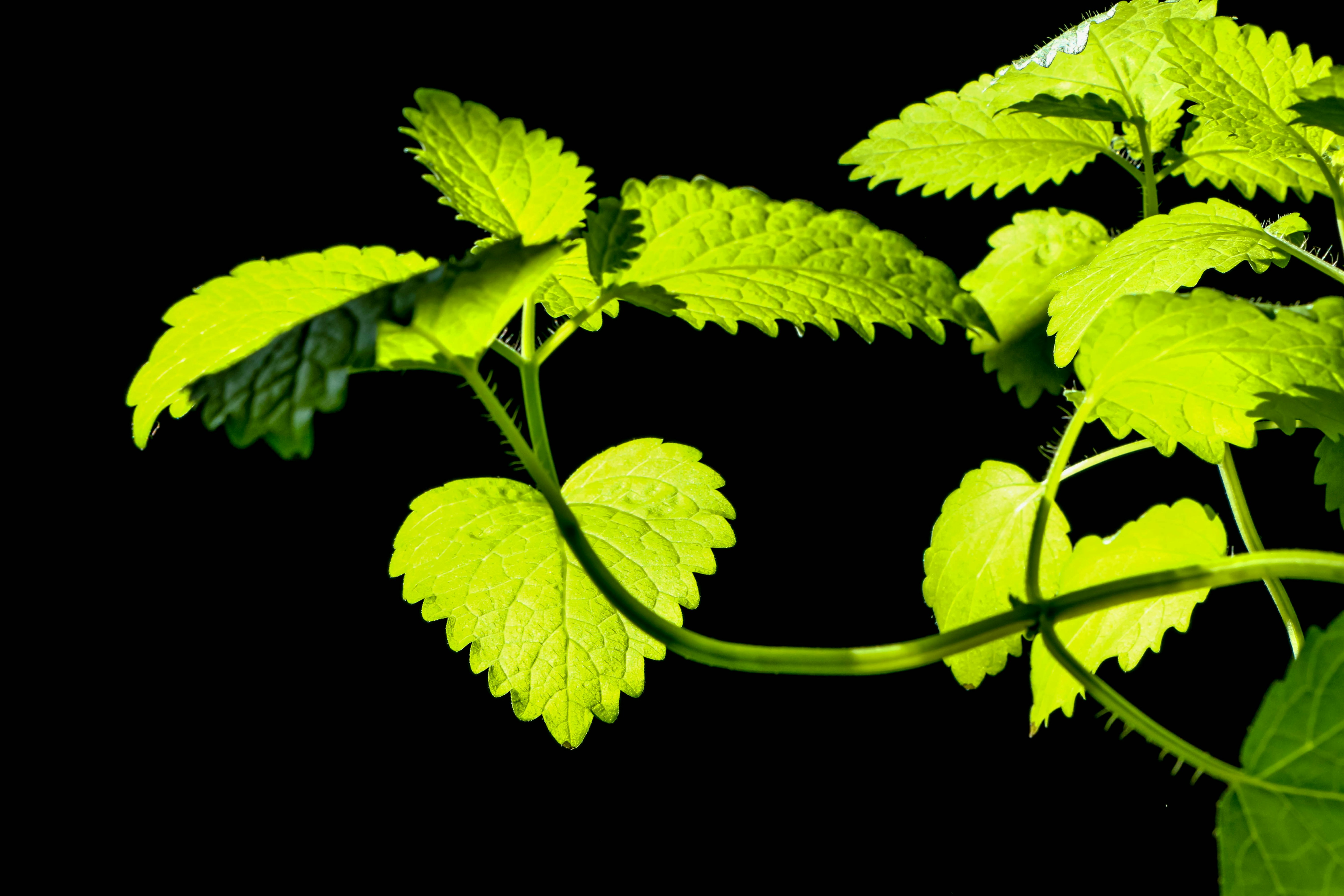
After steeping, sipping, and savoring dozens of teas, we’ve uncovered a treasure trove of flavors and experiences. Whether you’re a black tea traditionalist, a green tea enthusiast, or an adventurous soul craving funky blends, there’s a perfect tea waiting for you.
Our top pick for the quintessential black tea is Fortnum & Mason Royal Blend. It’s smooth, malty, and sophisticated—truly a regal experience in every cup. For those who adore the classic citrusy aroma of Earl Grey, Murchie’s Earl Grey hits the perfect balance of bright bergamot and smooth vanilla notes. If you want to explore something truly unique, Third Culture Bakery’s Honey Bug Bite Oolong offers a naturally sweet, honeyed complexity that’s unlike anything else.
We also loved the creativity of Onyx Tealight’s black tea blend and the refreshing Southern charm of Luzianne Iced Tea. For green tea lovers, Masha Green and premium matchas like Ippodo Horai and Kettl Uji Genmaimatcha deliver vibrant, nuanced cups that elevate your tea ritual. Herbal fans will appreciate the zesty brightness of Teapigs Lemon & Ginger and the caffeine-free warmth of Big Heart Tea Co. Chai.
Positives across these picks include:
- Exceptional leaf quality and freshness
- Complex, balanced flavor profiles
- Wide range of options for different tastes and occasions
- Trusted brands with rich histories and ethical sourcing
Drawbacks to consider:
- Some premium teas require precise brewing techniques
- Loose-leaf teas may be less convenient than bags for some
- Specialty blends can be pricier, but worth the investment for quality
Our confident recommendation: Start with one or two teas that match your taste preferences and brewing style. Experiment with brewing temperatures and steeping times to unlock the full potential of each leaf. And remember, the “best” tea is the one that makes you smile with every sip.
So, is there a single “best tea to buy”? Not really—it’s a delicious journey, not a destination. But with this guide, you’re well-equipped to find your perfect cup. Ready to dive in? Your next favorite tea is just a brew away! 🍵
🔗 Recommended Links for Tea Lovers
Ready to shop? Here are direct links to our top picks and some excellent tea-related books to deepen your appreciation.
-
Fortnum & Mason Royal Blend:
Amazon | Fortnum & Mason Official Website -
Murchie’s Earl Grey:
Murchie’s Official Website -
Third Culture Bakery Honey Bug Bite Oolong:
Third Culture Bakery Official Website -
Onyx Tealight Black Tea Blend:
Onyx Coffee Lab Official Website -
Yamamotoyama Jasmine Tea:
Amazon | Yamamotoyama Official Website -
Masha Tea (Green and Love blends):
Masha Tea Official Website -
Ippodo Horai Matcha:
Ippodo Official Website -
Kettl Uji Genmaimatcha:
Kettl Official Website -
Onyx Peppermint Yerba Mate:
Onyx Coffee Lab Official Website -
Bellocq No. 96 White Wedding:
Bellocq Official Website -
Big Heart Tea Co. Chai:
Amazon | Big Heart Tea Co. Official Website -
Teapigs Lemon & Ginger:
Amazon | Teapigs Official Website -
Tazo Passion:
Amazon | Tazo Official Website
Recommended Books on Tea
-
The Tea Book by Linda Gaylard — A comprehensive guide to tea types, history, and brewing techniques.
Amazon Link -
The Story of Tea: A Cultural History and Drinking Guide by Mary Lou Heiss and Robert J. Heiss — A beautifully illustrated exploration of tea’s global journey.
Amazon Link -
The Art and Craft of Tea by Joseph Uhl — Perfect for those who want to master brewing and tasting.
Amazon Link
❓ Frequently Asked Questions About Buying the Best Tea
What are the most popular types of tea for beginners to try?
Starting your tea journey can be as simple or adventurous as you want. For beginners, we recommend:
- English Breakfast or Assam Black Tea: Bold, robust, and easy to brew. Great with or without milk.
- Sencha or Jasmine Green Tea: Fresh, grassy, and aromatic without being overwhelming.
- Oolong Tea: Especially lightly oxidized varieties, which offer a gentle introduction to more complex flavors.
- Herbal Teas like Peppermint or Chamomile: Caffeine-free and soothing, perfect for evenings or when you want something gentle.
These teas are widely available, forgiving in brewing, and offer a broad flavor spectrum to help you discover your preferences.
How do I choose the right tea for my personal taste preferences?
Taste is personal, but here’s a roadmap:
- If you like strong, malty, or robust flavors, black teas like Fortnum & Mason Royal Blend or Luzianne Iced Tea are your friends.
- If you prefer light, fresh, or vegetal notes, green teas such as Masha Green or Japanese Sencha are ideal.
- For complex, floral, or sweet profiles, explore oolongs like Third Culture Bakery Honey Bug Bite or jasmine teas.
- If you want caffeine-free, soothing blends, herbal teas like Big Heart Tea Co. Chai or Teapigs Lemon & Ginger fit the bill.
Experimentation is key! Try small quantities of different teas and note what excites your palate. Our tasting guide above can help you identify flavor notes to refine your choices.
What are the health benefits of drinking different types of tea?
Tea is more than a comforting ritual—it’s a wellness powerhouse. Here’s a quick overview:
- Green Tea: Rich in antioxidants like EGCG, supports metabolism, heart health, and brain function.
- Black Tea: Contains theaflavins that promote cardiovascular health and gut microbiome balance.
- Oolong Tea: Combines benefits of green and black teas, may aid weight management and reduce inflammation.
- White Tea: High in antioxidants, gentle caffeine, supports skin and heart health.
- Herbal Teas: Vary widely—peppermint aids digestion, chamomile promotes relaxation, ginger fights inflammation, hibiscus supports blood pressure regulation.
Remember, tea complements a healthy lifestyle but isn’t a cure-all. Drink mindfully and enjoy the ritual as much as the benefits.
Are loose-leaf teas better than tea bags, and why should I consider switching?
In most cases, yes! Loose-leaf teas typically use whole or large leaf pieces, which retain more essential oils and complex flavors. They allow the leaves to unfurl fully during brewing, resulting in a richer, more nuanced cup.
Tea bags often contain fannings or dust—small broken bits that brew quickly but can taste bitter or flat. Plus, many bags are made of paper or plastic that can affect flavor and environmental impact.
Switching to loose leaf may require a bit more effort (infusers, measuring), but the taste payoff is well worth it. Plus, it’s a more sustainable choice if you avoid single-use bags.
How can I make iced tea that tastes just as good as hot tea?
To get that perfect iced tea:
- Brew your tea stronger than usual (about 1.5 to 2 times the amount of tea leaves).
- Use fresh, filtered water and steep at the right temperature.
- Once brewed, cool quickly by pouring over ice or chilling in the fridge.
- Add lemon, mint, or a touch of sweetener if desired.
- Use teas known for iced brewing, like Luzianne, Tazo Passion, or fruity herbal blends.
Avoid brewing tea directly in cold water for long periods (sun tea) as it risks bacterial growth and weak flavor.
Can I re-steep my tea leaves multiple times?
Absolutely! High-quality loose-leaf teas, especially oolongs, greens, and some whites, are designed for multiple infusions. Each steeping reveals new flavors and aromas. Generally, the first steep is the strongest; subsequent steeps are lighter but still enjoyable.
Avoid re-steeping standard tea bags, as they release most of their flavor in the first brew.
📚 Reference Links and Further Reading
- The History of Tea – World History Encyclopedia
- Tea Fact Sheet – Tea Association of the USA
- Health Benefits of Tea – Harvard T.H. Chan School of Public Health
- Fortnum & Mason Royal Blend Tea
- Murchie’s Earl Grey
- Third Culture Bakery Honey Bug Bite Oolong
- Onyx Coffee Lab Tealight
- Luzianne Iced Tea
- Yamamotoyama Jasmine Tea
- Masha Tea
- Ippodo Horai Matcha
- Kettl Uji Genmaimatcha
- Onyx Peppermint Yerba Mate
- Bellocq No. 96 White Wedding
- Big Heart Tea Co. Chai
- Teapigs Lemon & Ginger
- Tazo Passion
- The 10 Best Types of Tea for Your Health – Health.com
We hope this guide helps you find the best tea to buy and inspires you to savor every sip with newfound appreciation. Happy brewing! 🍵
